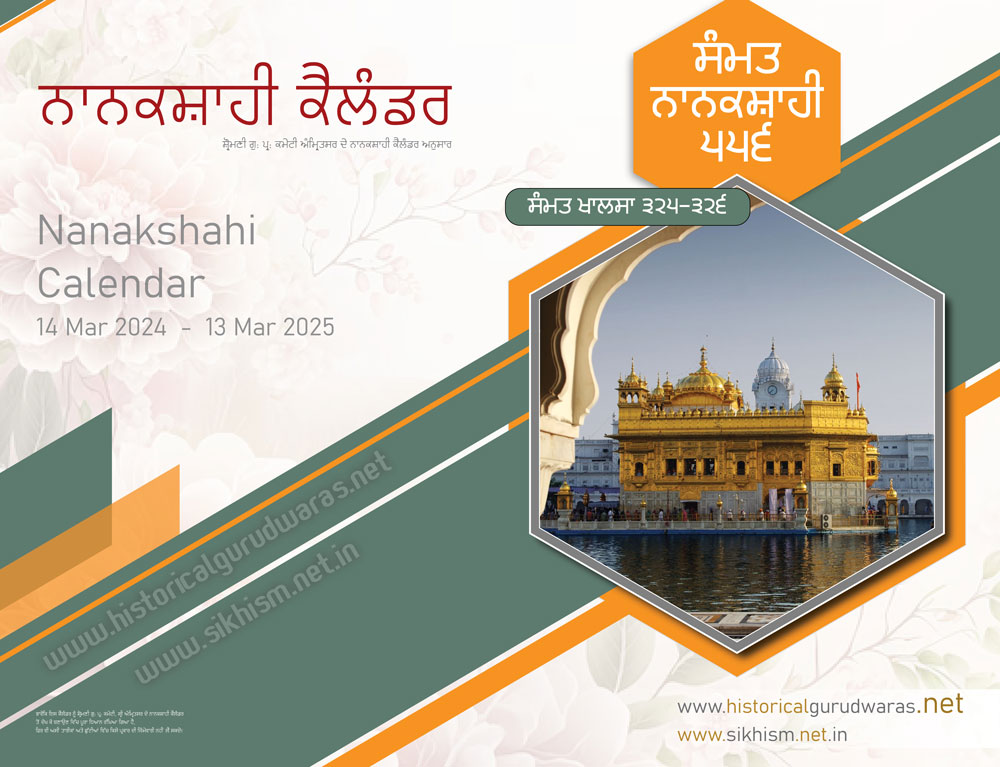Nanakshahi Calendar 556
kYlMfr sMmq nwnkSwhI 556
sMn 2024-025

Nanakshahi Calendar 556
Calendar 2024-2025 AD

The Nanakshahi Calendar is a tropical solar calendar used by some Sikhs, named after the founder of Sikhism, Guru Nanak Dev Ji. It has several key features that distinguish it from other calendars commonly used in Sikhism:
- Based on the Solar Year: Unlike the Bikrami calendar, which is a lunar calendar with adjustments to align with the seasons, the Nanakshahi calendar directly follows the earth's revolution around the sun. This makes it more accurate in aligning important dates with the actual seasons year after year.
- Fixed Dates for Sikh Festivals: All important Sikh festivals, such as Guru Nanak's birthday (Gurpurab) and Vaisakhi, fall on the same dates every year in the Nanakshahi calendar. This eliminates the need for complex calculations and inconsistencies found in other calendars.
- Start Date: The Nanakshahi calendar begins with the month Chet, with 1 Chet coinciding with 14 March. The reference point for the calendar is the birth of Guru Nanak Dev in 1469 CE.
- Months and Days: There are twelve months in the Nanakshahi calendar, named after the "Barah Maha" composition found in the Guru Granth Sahib. Five months have 31 days, six have 30 days, and the last month has either 30 or 31 days in a leap year.
- Adoption and Controversy: The Nanakshahi calendar was officially adopted by the Shiromani Gurdwara Parbandhak Committee in 1999, but its usage remains controversial among some Sikhs.

/golden-temple-travel-guide.jpg)


